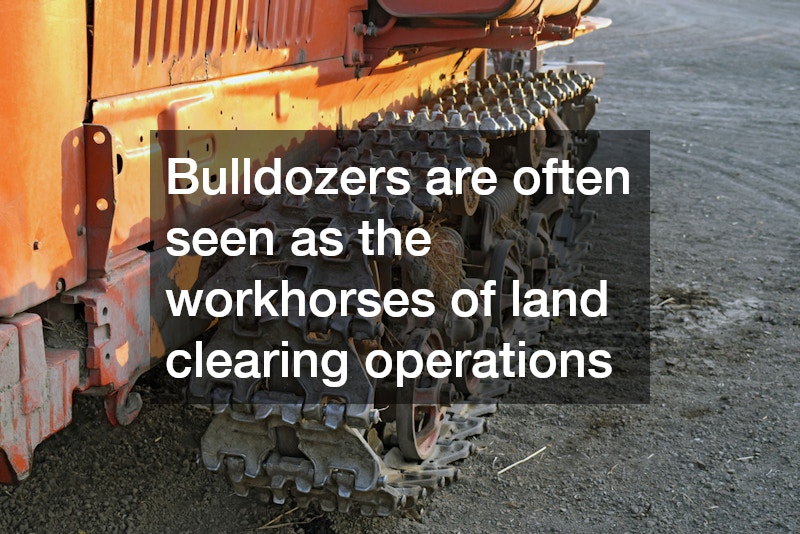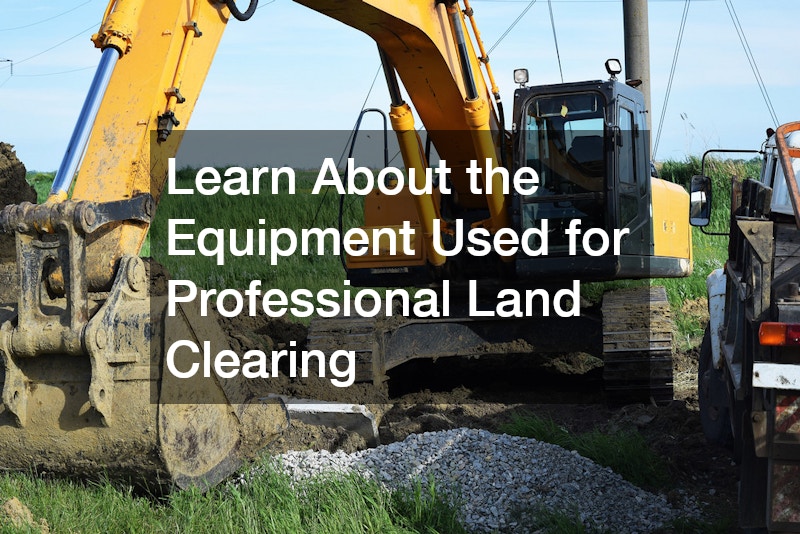It is essential to explore the tools and machinery involved in professional land clearing, an integral process for land development, agriculture, and construction projects. Understanding the equipment used can provide insights into the efficiency, effectiveness, and safety of land clearing operations.
What is the purpose of land clearing equipment?
Land clearing is a critical initial step in preparing a site for any construction or agricultural project. The primary purpose of land clearing equipment is to remove trees, brush, stumps, and stones efficiently, allowing for smoother and safer progression to subsequent stages of development.
Such equipment is designed to streamline the process, significantly reducing the time and physical labor traditionally associated with clearing land manually.
Without these tools, the process would be significantly more arduous and time-consuming. Machines are able to perform tasks that would take several workers days or even weeks to achieve. This not only impacts the timeline of projects but also their financial viability, as labor costs can be effectively minimized with the right machinery.
Additionally, modern land clearing technology incorporates features that enhance precision and minimize environmental disruption. This is crucial in areas where maintaining ecological balance and reducing the footprint of clearing activities are of utmost importance. As a result, the equipment serves multiple roles, not only aiding in physical site preparation but also supporting sustainable practices.
What types of machinery are commonly used in land clearing?
Bulldozers are often seen as the workhorses of land clearing operations. Equipped with a wide, flat blade, they are adept at pushing large quantities of soil, sand, rubble, and debris. Their robust build and powerful engines enable them to tackle hard terrain, making them indispensable in both small-scale and extensive land clearing tasks.
Excavators bring versatility to the table with their rotating platform, long arm, and adaptable attachments, such as grapples and buckets. These features make them ideal for digging, lifting, and removing heavy objects like large stones and tree stumps that a bulldozer might struggle with alone. Their precision is particularly valued in areas where careful handling of materials is necessary to prevent soil degradation or damage to roots that may need to remain undisturbed.
Brush cutters and mulchers, though often overlooked, are vital for clearing dense underbrush and small trees swiftly. These machines shred vegetation into mulch, which can be spread across the cleared area to hinder erosion and boost soil health. Chainsaws, though handheld, offer precision and flexibility in cutting, particularly in areas where large machinery cannot easily access or where control over the cut is critical.
How do you choose the right equipment for a land clearing project?
When determining the appropriate machinery for a given land clearing project, several factors warrant careful consideration. The first is the type of terrain: rocky or uneven surfaces may necessitate more robust machines like bulldozers, whereas more refined equipment such as mulchers may be necessary in forested areas with substantial undergrowth. The soil condition—such as wetness or compactness—also influences machinery choice due to traction and maneuverability needs.
The size of the area to be cleared is another vital factor. Larger plots may require multiple machines to operate simultaneously for efficiency, whereas smaller sites might be manageable with just a single excavator or bulldozer. This consideration ties in closely with project timelines, as faster completion may demand machines capable of higher productivity.
Budgetary constraints also play a significant role in equipment selection. While owning machinery might suit frequent or exceptionally large projects, renting can be a cost-effective solution for less frequent needs. Finally, evaluating the equipment’s environmental impact—including noise levels and emissions—is becoming increasingly important in the decision-making process to align with sustainable development goals.
What safety measures are important when using land clearing equipment?
Safety remains paramount in land clearing operations, with numerous potential hazards posed by both the machinery and the nature of the work itself. Personal protective equipment (PPE) is essential, with operators needing hard hats, safety goggles, gloves, and steel-toed boots to shield against physical injuries. High-visibility clothing is also crucial on-site to ensure operators are easily seen by other machinery handlers and ground workers.
Proper training is fundamental, as handling heavy machinery requires a comprehensive understanding and hands-on experience to avoid accidents. Operators should be well-versed in the limitations and capabilities of their equipment. Additionally, maintenance is a key component of safety, with regular checks necessary to ensure equipment is functioning correctly, reducing the risk of mechanical failures that could lead to injury or project downtime.
Furthermore, site assessments and safety briefings should precede any land clearing activity. This ensures that all personnel are aware of specific hazards unique to the site, such as unstable ground, power lines, or wildlife. By maintaining a strong culture of communication and awareness, potential risks can be better managed, ensuring smoother and safer operations for all involved.
Understanding the equipment used in professional land clearing allows stakeholders to make informed decisions about land management. By addressing the most frequently asked questions, we hope to provide a comprehensive overview of this crucial process and underscore the importance of choosing the right tools for effective and environmentally conscious land clearing.



